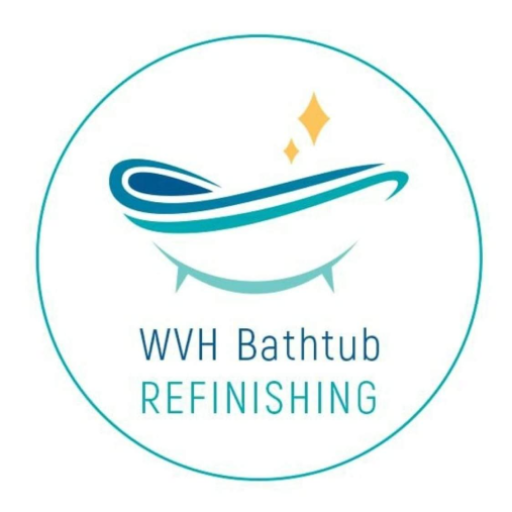Want your refinished bathtub to look like new for years? With a few simple habits and the right cleaning methods, you can extend the life of your tub’s glossy finish and avoid costly touch-ups.
How do I maintain a refinished bathtub to ensure it lasts longer?
To maintain a refinished bathtub and ensure it lasts longer, avoid using harsh chemicals, abrasive scrubbers, and any products that can damage the surface. Clean regularly with mild soap and a soft cloth or sponge. Consider using a non-abrasive cleaner and apply a protective finish or wax as recommended by the refinishing contractor.
What cleaning products should I use for a reglazed bathtub?
Use gentle, non-abrasive cleaners designed for use on reglazed or refinished surfaces. Mild dish soap, vinegar and water, or specialized bathtub cleaners are ideal. Avoid products that contain bleach, ammonia, or harsh abrasives, as they can damage the refinished surface.
Can I use abrasive cleaners on a refinished bathtub?
No, abrasive cleaners should be avoided on a refinished bathtub. These products can scratch and damage the surface, reducing the longevity of the finish. Always opt for a soft cloth or sponge with gentle, non-abrasive cleaners to protect the refinished surface.
How do I clean stubborn stains on a refinished bathtub?
For stubborn stains, try soaking the area with a mixture of vinegar and water or use a specialized cleaner formulated for refinished bathtubs. Let the solution sit for a few minutes, then gently scrub with a soft sponge. If the stains persist, consider consulting your refinishing contractor for advice on tougher stains.
Should I wax my refinished bathtub to protect the finish?
Yes, waxing your refinished bathtub can help protect the finish. Applying a non-abrasive, carnauba-based wax can provide an extra layer of protection, enhance the shine, and make cleaning easier. Follow the manufacturer's recommendations for waxing frequency and product use.
Can I use a bathmat with suction cups in a refinished bathtub?
It’s best to avoid using bathmats with suction cups in a refinished bathtub, as they can trap moisture and potentially damage the finish over time. If you do use a bathmat, ensure that it’s designed for use in refinished bathtubs and has non-abrasive backing that won't harm the surface.
How often should I clean a refinished bathtub?
It’s recommended to clean your refinished bathtub at least once a week to prevent soap scum, grime, and mineral deposits from building up. Use a gentle cleaner and a soft sponge or cloth to maintain the finish and avoid damage.
How can I protect the finish from scratches and chips?
To protect the finish from scratches and chips, avoid using harsh scrubbing tools like wire brushes or abrasive pads. Also, refrain from dropping heavy items into the tub. Using a soft cloth or sponge for cleaning and installing a non-slip mat with a smooth surface can help protect the finish.
What should I do if my refinished bathtub gets a scratch?
If your refinished bathtub gets a scratch, you can usually touch it up with a repair kit. These kits are available from most refinishing contractors and include the necessary materials to repair small chips and scratches. If the damage is significant, consider calling a professional refinisher for help.
How can I fix small chips or cracks in a refinished bathtub?
Small chips or cracks in a refinished bathtub can be fixed with a bathtub repair kit. These kits typically include resin or epoxy designed to match the finish of your bathtub. If you're unsure about how to apply the repair, consider consulting a professional refinishing contractor.
Is there a specific way to dry my refinished bathtub after use?
After use, it’s a good idea to dry your refinished bathtub with a soft towel or microfiber cloth. This helps prevent water spots and mineral buildup. Avoid using abrasive towels or scrubbers that could scratch the finish.
Can I use a pumice stone to remove stains from a reglazed tub?
While pumice stones are effective for removing tough stains, they can be abrasive on a reglazed surface. It’s best to use them sparingly and gently, or opt for a less abrasive method like using a mild cleaner and soft sponge. Always test a small, inconspicuous area first before using a pumice stone.
How can I prevent water spots or hard water buildup on a refinished bathtub?
To prevent water spots or hard water buildup, dry the bathtub after each use with a soft towel or microfiber cloth. You can also apply a water-repellent product or a protective finish recommended by your refinishing contractor to reduce the buildup of minerals.
Should I avoid placing heavy objects in the refinished bathtub?
Yes, avoid placing heavy objects in a refinished bathtub, as they can cause cracks, chips, or dents in the finish. The refinished surface is durable but can still be damaged by hard impacts. Use caution when placing items in the tub and avoid dropping heavy objects.
Can I use a shower curtain or a shower door after refinishing?
Yes, you can use a shower curtain or a shower door after refinishing your bathtub, but only once the coating has fully cured — usually after 24–36 hours. Just be sure to avoid placing heavy or abrasive items in contact with the surface. A shower door should have a smooth, non-abrasive seal, and the shower curtain should not be dragged across the surface to prevent scratches.
Does the finish of a refinished bathtub require any special care for different water temperatures?
The finish of a refinished bathtub can generally withstand both hot and cold water. However, extreme temperature fluctuations (e.g., sudden exposure to very hot water right after a cold rinse) may cause the finish to crack over time. Avoid very hot water for extended periods if possible and ensure that the tub is properly dried after each use.
How can I prevent soap scum from building up on my refinished bathtub?
To prevent soap scum buildup, rinse your bathtub after each use to remove soap residue. You can also use a mild cleaner designed for refinished tubs to prevent soap scum from accumulating. Regular cleaning with a soft cloth or sponge will help maintain the finish and keep soap scum at bay.
Are there any recommended tools for cleaning a refinished bathtub?
For cleaning a refinished bathtub, use a soft sponge, microfiber cloth, or a non-abrasive cleaning pad. Avoid using wire brushes, steel wool, or rough scrubbing pads, as these can scratch the finish. Mild, non-abrasive cleaners or those specifically designed for reglazed surfaces are the best option for maintaining the bathtub’s appearance.
How can I ensure that my reglazed bathtub doesn’t become slippery?
To ensure that your reglazed bathtub doesn’t become slippery, consider applying a non-slip coating or using a non-slip mat designed for reglazed surfaces. Additionally, clean the tub regularly to avoid soap scum buildup, which can make the surface slippery.
Can I use essential oils or bath bombs in a refinished bathtub without damaging the finish?
While essential oils and bath bombs are generally safe to use, it’s important to avoid excessive amounts of oil, as they can leave residues on the tub that may be difficult to clean. Some bath bombs may also contain colorants that can stain the finish, so it's best to use products that are gentle on the surface.
Should I avoid using harsh chemical cleaners like bleach or ammonia on a refinished bathtub?
Yes, you should avoid using harsh chemical cleaners such as bleach or ammonia on a refinished bathtub. These chemicals can break down the finish over time, leading to discoloration, fading, or damage. Stick to mild, non-abrasive cleaners to preserve the bathtub’s surface.
How do I protect my refinished bathtub from mold and mildew?
To protect your refinished bathtub from mold and mildew, ensure that the area is well-ventilated. After each use, dry the tub with a towel or microfiber cloth to remove excess moisture. Regularly clean the surface with a non-abrasive cleaner to keep mold and mildew at bay.
Is it safe to use bleach on a refinished bathtub to remove mold?
It is generally not recommended to use bleach on a refinished bathtub, as it can damage the finish over time. Instead, use a mold remover specifically designed for refinished surfaces, or a mixture of water and white vinegar to safely clean and remove mold.
Can I use a refinished bathtub in a home with hard water without damaging the surface?
Yes, you can use a refinished bathtub in a home with hard water, but it’s important to regularly clean the surface to prevent mineral buildup and water spots. You may also consider applying a water-repellent product or use a water softener to minimize the effects of hard water on the finish.
How do I avoid the finish fading or discoloring over time?
To avoid fading or discoloration, avoid using harsh chemicals or abrasive cleaners that can break down the finish. Additionally, limit exposure to direct sunlight, as UV rays can cause the finish to fade over time. Regular cleaning and maintenance will also help preserve the tub’s appearance.
How can I extend the life of the refinished coating?
To extend the life of your refinished coating, clean it regularly with a mild, non-abrasive cleaner and avoid using harsh chemicals or abrasive tools. Also, dry the tub after each use to prevent water spots and soap scum buildup. Avoid placing heavy objects in the tub to protect the surface from damage.
Should I remove any water that sits in the tub for extended periods?
Yes, you should remove any standing water from your refinished bathtub if it sits for extended periods. Leaving water in the tub can lead to mineral buildup, mold, or mildew growth. Always dry the tub after each use to maintain the finish and prevent potential issues.
Is it necessary to reapply any coatings or sealants after a few years?
Yes, after a few years, it may be necessary to reapply a fresh coating or sealant to maintain the appearance and protection of your refinished bathtub. Depending on the level of use and the condition of the tub, a new coat can help preserve the surface and extend its life. Consult your refinishing contractor for the ideal maintenance schedule.
How should I store products like shampoos or conditioners in a refinished bathtub?
To protect your refinished bathtub, store products like shampoos and conditioners on a shelf, shower caddy, or wall-mounted holder, instead of directly on the bathtub surface. This helps prevent spills or residue buildup that can damage the finish over time.
Can refinishing a bathtub affect the way it holds water temperature?
No, refinishing a bathtub should not affect its ability to hold water temperature. The refinishing process typically involves applying a thin layer of coating that doesn’t alter the tub’s insulation properties. However, be mindful that excessive heat from very hot water can cause wear on the finish over time.



